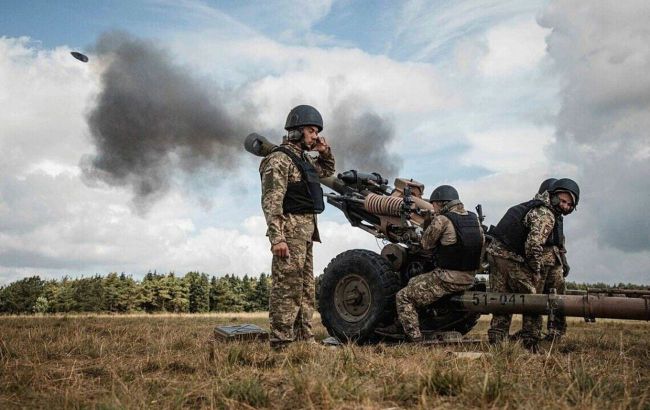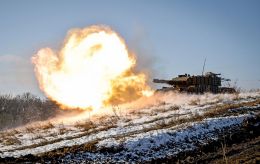Russian troops try to create buffer zone in Kharkiv region
 Russian troops try to create a buffer zone in the Kharkiv region (photo from the open sources)
Russian troops try to create a buffer zone in the Kharkiv region (photo from the open sources)
Regarding the rapid advancement of Russian troops in the area near the city of Vovchansk in the Kharkiv region, it indicates that Russian forces prefer to establish a buffer zone in the region rather than a deeper penetration into the country, according to the Institute for the Study of War (ISW).
Analysts have not yet observed confirmation that Russian troops have crossed to the southern bank of the Vovcha River in Vovchansk or its immediate vicinity. On May 12, the Russians struck bridges across the river directly to the west and east of the city, and on May 13, they began shelling bridges across the river and logistical routes in Vovchansk itself. As a result, the Defense Forces are left with only two usable bridges across the Vovcha River within the city limits.
ISW could not clearly determine why the Russian army targeted the bridges, as they are necessary for the enemy to cross and ensure stable logistics across the river and for further offensive operations into the northern part of the Kharkiv region. The Institute suggests that this indicates the Russian forces' intention to quickly achieve victory in the unfortified area in northern Ukraine.
Additionally, on the night of May 12 and throughout May 13, Russian troops also redeployed armored vehicles to this area, including an attack on Vovchansk with an unspecified number of tanks.
"The deployment of armored assets in this area suggests that Russian forces are seeking to make rapid gains, but they do not appear to be setting conditions at this time for such gains to be on the southern side of the Vovcha River deeper into northern Kharkiv region. These indicators collectively suggest that Russian forces are likely trying to create the promised buffer zone in the border area instead of pursuing deeper gains into Kharkiv region or towards Kharkiv City," the ISW report said.
Buffer zone
Previously, Russian President Vladimir Putin and other Kremlin officials have repeatedly proposed creating a demilitarized buffer zone in the territories of occupied Ukraine to protect Russian territory from Ukrainian strikes. On May 13, Russian Ambassador to the US Anatoly Antonov directly linked the activation of Russian offensive operations south of the Belgorod region to the creation of such a buffer zone.
Ukrainian and Western officials have also recently stated that Russian forces intend to create a 10-kilometer buffer zone in the Kharkiv region. The Institute for the Study of War reported that such a zone would simultaneously bring Russian forces closer to the city of Kharkiv within the range of small arms artillery and move the main Russian logistics centers out of reach of this type of artillery.
One of the Ukrainian military commanders expressed concern that the fortifications of the Armed Forces of Ukraine in the north of the Kharkiv region are not located along the immediate international border, allowing Russian forces to advance quickly and relatively shallowly. At the same time, the higher command recently announced the creation of a multi-layered deep echeloned defense by the Defense Forces in the depth of the region, which coincides with reports from other military commanders.
"The current pace of Russian advances on this axis is not necessarily indicative of the further offensive capabilities of the Russian forces conducting the offensive operations, although Russia reportedly retains considerable reserves available to exploit initial successes on this axis," the ISW report said.
Situation in the Kharkiv region
On May 12, the Russians began an offensive in two areas northeast of Kharkiv, engaging over 30,000 troops in the operation.
In the past day, on the Kharkiv front, the Defense Forces repelled 13 enemy attacks in the area of Vovchansk and several other populated areas. Military forces are clearing the city and fighting continues.
The Russian forces continue to advance in the Kharkiv region, consolidating their positions in occupied areas and setting up backup positions.

